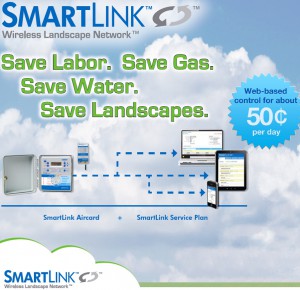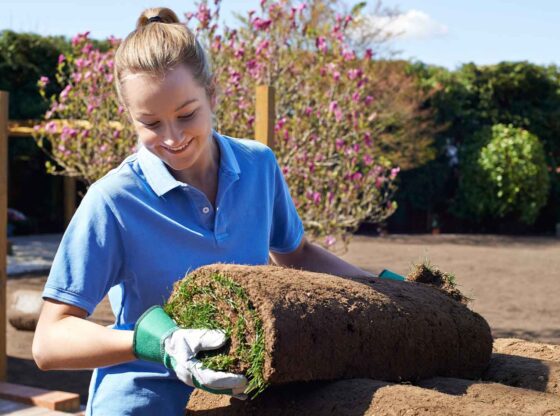For many years I wondered why the irrigation industry was so far behind many others in remote communication and control. Why could the home alarm people have inexpensive remote monitoring and we could not? It seemed our industry was afraid of or unable to harness the technology available.
Irrigation Central Control Today
Indeed, I know many in distribution and contracting who do not want to harness technology. So I suppose we must admit to our own weakness. Manufactures will give us what we ask for if enough are asking for it. A few jump out ahead of the pack and try to push adoption before the market is ready. We should support those trying to elevate our backward tendencies.
With current technology we can easily and affordably offer remote communications and control of irrigation systems. But there’s more, we can also gather data to improve and automate many functions. Such as scheduling, maintenance, water consumption, utilization, etc.
Access to easily implemented, easy to use, and inexpensive hardware has been an issue. All manufactures have pieces and systems to provide some sort of remote access, but Weathermatic has created a low cost simple to use platform that is a good irrigation central control package.
The SmartLine Platform
The SmartLine controller is the foundation of the system. It costs and operates about the same as any other good irrigation controller with these enhancements;
Standard or 2-wire Field System– Weathermatic was the first to introduce such a controller more than 7 years ago. As of last year there were over 200,000 SmartLines installed. The same controller chassis can do either standard field wiring or support a decoder 2-wire system. A very handy feature to fit any application.
ET Based Scheduling– Again, one of the first to bring to the market a controller with a site weather sensor allowing the controller to calculate when and how much to irrigate based on site conditions
SmartLink Communications– More in the next section.
The SmartLine does most everything contractors and users want an irrigation controller to do for an affordable price and easy operations.
The SmartLink System
SmartLink is a cell phone based communication device that attaches directly to a SmartLine controller. Takes minutes to hang on the wall and call in to activate service. Once done, a contractor, user, or anyone else granted access can remotely monitor and operate one or thousands of controllers from any internet enabled device.
Contractors love being able to see and alter what is happening from their smart phones, tablets, or computers. Users like the same. Maintenance guys love it. It gives full remote operations and monitoring at a very reasonable price.
But there’s more. SmartLink can also provide reporting. Historical data is maintained so reports to satisfy owners, governmental bodies, and site managers are easily produced. Of particular handiness is the “Wet Check” report for maintenance guys.
Using a smart phone a maintenance tech can visit station by station to run the zone and easily note repair tasks that need addressed. The servicing contractor can even input standard service costs so after the wet-check is completed and quote is automatically created. A huge time saver for those who service irrigation systems on large or multiple sites.
Bottomline
SmartLine with SmartLink gives us an irrigation central control system that does almost everything people want. From simple to fairly complex its reliable, easy, full of useful features, and very affordable.
What’s the downside? Well, nothing is ever perfect. SmartLink will not fit advanced central needs. SmartLink is a low end low cost yet full of features central. It is not a high end central control system. Here are some things SmartLink does not handle as well as full functioning irrigation central control systems, such as Rain Bird and Tucor, can provide;
- Centralized Multi Controller/Site– SmartLink is controller specific. Each controller is addressed individually. Which means logging into each controller to handle whatever functions you want. There is no facility allowing one entry to affect multiple controllers or sites.
- Flow Management- SmartLink can manage flow for one controller, but not a group of controllers. If a site has 10 controllers sharing a water supply, there is no function to manage the flow for all 10. There is a device to share flow data amoung up to 6 local controllers, but not flow manage.
- Single Communication Service– Each SmartLink requires a cell modem account. Whereas a higher end central would have a computer or cloud service with a single communication service that covers all the controllers on that site.
- Advanced Sensor Input and Reaction– SmartLink cannot digest input from more than one sensor for use in scheduling or reaction. Especially in a multi-controller environment.













Your Article said:- “The SmartLink System” “Bottomline”
SmartLine with SmartLink gives us an irrigation central control system that does almost everything people want. From simple to fairly complex its reliable, easy, full of useful features, and
“very affordable”. Probably very true for landscaping companies managing irrigation for Estates and Golf Courses.
But not affordable for a homeowner I’m afraid. The cell phone modem costs about $300.00 and the subscription to the data center is $300.00 per year.. Thats too rich for a homeowner, plus the cost of a 8 or 12 zone controller. (Another $200 – $300). It would be nice if the Smartlink Remote Application, could be available for use with a home owners WiFi network to use the remote features and data collection. Especially with water Companies in Ca. cutting household allowances and invoking large penalties for over budget use. The remote features aside, it is a nice controller and straight forward to set up with without having the unit in the wall mount cabinet.
You are correct about the cost factor. In relation to commercial or public sites the cost is minimal compared to other centrals. Perhaps not the answer for those managing residential sites. Tech is migrating into the irrigation world. A simple inexpensive residential remote access will be introduced by a trusted supplier sometime soon.